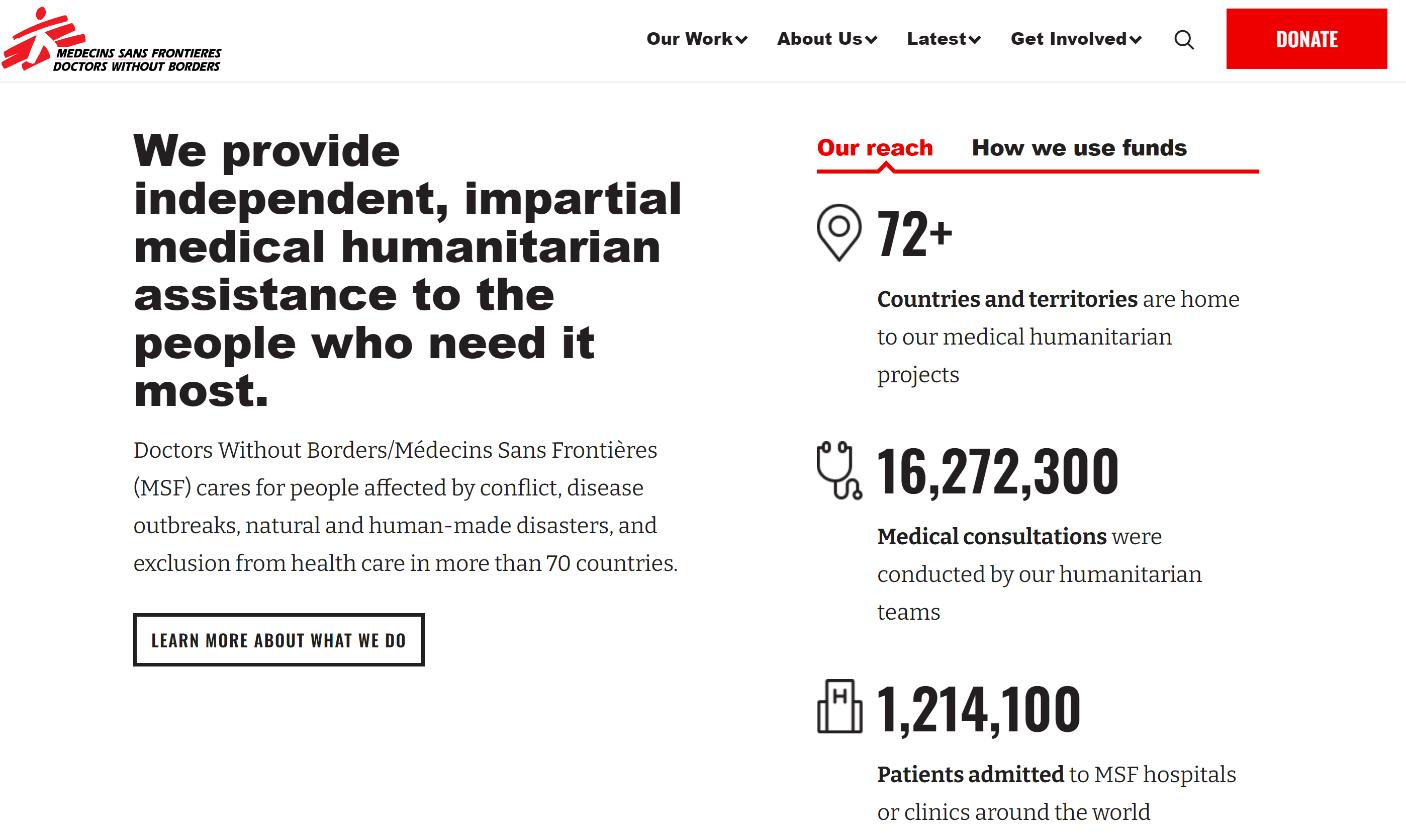Unit 1.2 Business Management
What sort of structure?
#1 FANCY OR FUNCTIONAL?
Two business structures compete for your attention in providing housing!
Business Structure A: In a bustling urban landscape, two distinct business structures vie for attention, each embodying diverse philosophies on providing housing. The first, a community-driven housing plan, which champions egalitarian ideals, offering shared decision-making and financial collaboration among residents. This structure, known for its communal spirit, recently unveiled an innovative housing project fostering inclusivity and sustainability.
Business Structure B: On the flip side, another business structure has entered the scene with a lavish residential development promising exclusive amenities and personalized services. Tailored for the discerning buyer who has plenty of money, it boasts cutting-edge design and architectural touches and a promising lifestyle associated with wealth. However, despite the expensive price tag, the developers have become famous for producing lower quality offerings in order to boost the profit for the development company!


QUESTIONS FROM: 'FANCY OR FUNCTIONAL'?
- Define the business structure, cooperative [2]
- Identify from the case study, which structure (A or B) is likely to be offered by the private sector and which is likely to be offered by a housing cooperative [2]
- Examine (with reference to the case study) how housing provided by a housing cooperative might be different to housing provided by the private sector [6]
#2 SOLE TRADER OR PARTNERSHIP?
Sam, a seasoned architect with three successful years as a sole trader, stands at an important moment in his career. Initially, his solo journey was marked by the challenges of a slow start, but over time, he has carved a profitable niche for himself designing new homes and extensions for individual clients. Now faced with a critical decision, Sam must weigh the advantages of continuing as a sole trader against the potential benefits of transitioning to a partnership. Whilst Sam is happy with the profit he achieved, he has had some enquiries from larger companies and he fears he may not be able to complete all the work asked!
As a sole trader, Sam relishes the autonomy that comes with being the sole decision-maker. Every creative choice and business decision has been solely his, allowing for quick and decisive actions. Furthermore, all the profits from his entrepreneurial endeavors belong exclusively to him, adding a sense of financial independence to his professional satisfaction.
However, the potential benefits of a partnership structure has captured Sam’s attention. The prospect of sharing responsibilities and tapping into the diverse skill sets of potential partners could catalyze further growth. It might mean somebody else could do the web design or elements of the job that he really struggles with and allow him to specialise in other areas! Collaboration might bring fresh perspectives, innovative ideas, and a broader client base, amplifying the overall success of the architectural practice. Having more ‘hands on deck’ could also allow more work to be done and more money to be made!
Sam now grapples with the question of whether to embrace the collaborative spirit of a partnership or continue thriving as a lone entrepreneur.
QUESTIONS FROM: SOLE TRADER OR PARTNERSHIP?
- Identify the niche that Sam has focused on in the market [1]
- Define the business structure, sole trader [2]
- Explain how a lack of continuity can be a problem for sole traders [2]
- Identify from the case study, three benefits of operating as a sole trader and three benefits of operating as a partnership [6]
- Explain two ways in which a partnership could become larger in size than a sole trader [4]
- Discuss whether or not Sam should remain a sole trader or convert to a partnership [10]
#3 'GO BIG OR GO HOME'! LTD OR PLC?

In the heart of Bournville resides the Sweet Haven Chocolate Factory (SHCF), a family-run business that has sweetened the lives of locals for over two decades. Originally a modest LTD established by the Denison family in 1980, the enterprise has blossomed into an English. Now, at a crucial crossroads, the Denison family contemplates the decision of maintaining their current LTD status or transitioning into a PLC. Whilst they make substantial profits, their business aims and objectives have never centred around profit! In fact, one of the family members is far more interested on their reputation as the leading confectioner in the UK!
SHCF, operating as an LTD, boasts the advantage of family control. The Denison family enjoys the autonomy that comes with being decision-makers. This autonomy ensures a swift and distinct decision-making process, preserving the charm and identity of their brand. Additionally, as the sole proprietors, the family enjoys the exclusive right to all profits, fueling personal satisfaction and business growth.


However, the prospect of transitioning to a PLC beckons with enticing benefits. The potential to raise capital by selling shares to the public (IPO) could open avenues for ambitious expansion plans and future growth. This influx of funds could fuel market penetration, technological advancements, and product diversification. Moreover, a PLC structure offers the opportunity to bring in professionals with diverse skill sets. Delegating specialized tasks to experts could alleviate (improve) the workload on family members, allowing them to focus on core strengths and enhance overall business efficiency! Maybe it might even allow family members to be more ‘hands off’ and go enjoy the fruits of their chocolatey profit and take a holiday.
Yet, the move to a PLC is not without its challenges. The shift would entail relinquishing (giving up) some control over decision-making to external shareholders, potentially altering the company’s direction and values. The increased scrutiny and reporting requirements may reduce the businesses privacy and create unwanted eyes on the once family business! Additionally, one Denison family member views going public with a complete passion for profit which they simply don’t have! Whilst they want to run an efficient business, profit was never their sole motive for starting the business! Instead, they began the business to provide jobs for family members and hopefully enough money for future family generations!
As the Denison family stands at this crossroads, they grapple with the ideas of enjoying the status quo or going through the IPO process to see if they can increase growth through new investment and new markets!
The Denison’s know that floating the company through an IPO will change everything about the company from who works there to how the company is run to motivation and also outside pressure from media and shareholders! They don’t know if they want the additional pressures!
QUESTIONS FROM: 'GO BIG OR GO HOME'! LTD OR PLC?
- Identify one other goal (in addition to profit) at SHCF [1]
- Explain two differences between the business structures, private limited (LTD) and public limited company’s (PLC) [4]
- Discuss whether or not the Denison family should take the business public or remain LTD status [10]



#4 SOCIAL SAVE OR NOT?
In the realm of socially conscious businesses, TOMS Shoes has gained widespread recognition for its “One for One” model, hailed as a possible magic bullet. The concept is simple: for every pair of shoes purchased, TOMS donates a pair to someone in need. However, as time passes, doubts linger about the effectiveness and unintended consequences of this approach.
TOMS’ has undeniably made a positive impact, simplifying the act of giving and allowing consumers to directly contribute to global causes. The company’s efforts in raising awareness about poverty and providing essential items like shoes have resonated with socially conscious consumers, turning shopping into a vehicle for altruism.


Beyond shoes, TOMS expanded its philanthropic initiatives to include eye wear and clean water projects, showcasing a commitment to addressing a spectrum of global issues. The company is often praised as a model for businesses striving to be a force for good, with a strong emphasis on corporate social responsibility.
Despite good intentions, critics argue that TOMS’ model oversimplifies complex issues and may not address the root causes of poverty. The long-term effectiveness of simply donating shoes is questioned, with calls for more comprehensive strategies for sustainable development.
Concerns arise about the appropriateness and quality of the donated shoes, considering variations in local climates and cultural preferences. Additionally, the influx of free shoes may negatively impact local economies, particularly small-scale shoemakers who struggle to compete with the scale of TOMS’ donations!
Critics also highlight a lack of meaningful community engagement in TOMS’ approach, emphasizing the importance of involving local communities in decision-making processes. Environmental concerns are raised regarding the ecological footprint of producing and distributing large quantities of shoes.
Transparency issues and doubts about the percentage of revenue allocated to charitable activities cast shadows over TOMS’ reputation, particularly after so many high profile charity fraud cases!
While TOMS has undoubtedly left a positive footprint in the realm of conscious consumerism, the doubts surrounding its model serve as a reminder that good intentions don’t always equate to a perfect solution. As TOMS continues to evolve, critics start to ask questions like, ‘won’t consumers become frustrated at what is essentially paying way over the market price for a pair of very basic shoes’? Or, is this a long term, sustainable, viable business model in which consumers will agree to be overcharged indefinitely in order to contribute to a problem?
QUESTIONS FROM: SOCIAL SAVE OR NOT?
- 6Outline (with reference to the case study) the goal of TOMS shoes [2]
- Explain (with reference to the case study) one potentially negative impact that TOMS may have on other shoe manufacturers [2]
- Comment on whether you consider TOMS shoes to be good value for customers [3]
- Comment on whether you consider TOMS to be a business model that can be sustinable (last into the future) [3]
- Explain (with reference to the case study) two pieces of evidence that TOMS follows CSR practices [6]
- Explain (with reference to the case study) why TOMS is accused of cultural insensitivity regarding their provision of free shoes [4]
- Contrast (with reference to the case study) the three positives and three negatives that relate to TOMS as a business [6]
#5 IS PROFIT 'SUS'?
Some people take the view that any business run for profit does not necessarily prioritise the cause which it talks about or purports to be aimed at! Take for example, TOMS! Some people may suggest that because it makes profit, it does not truly seek to solve the problem! Or, that it might be somewhat interested, but simply taking advantage of a cause like poverty to gain recognition.
Some business structures do NOT seek to make profit, such as ‘non-governmental organizations’ (NGOs). NGO’s are an example of non-profit organizations (NPO’s)
Define, they are ‘legal entities organized and operated for a collective or social benefit rather than an entity that operates as a business that primarily aims to generate a profit for its owners or shareholders’


It goes without saying that even these non-profit organizations must earn a financial surplus from their business in order to cover costs so they can continue operating! The key difference is that the surplus (profit) is reinvested back in the business or community rather than being paid out or kept by owners or shareholders.
An example of a non-profit would be, ‘Doctors without borders’ (images above)
QUESTIONS FROM: IS PROFIT 'SUS'?
1. Explain why both profit making and non profit making social enterprises must make some profit [4]
2. Explain two financial challenges that social enterprises may face compared to traditional profit-oriented businesses. [4]
3. Explain the key characteristics of a social enterprise. [3]
4. Explain how a social enterprise differs from traditional for-profit businesses. [4]
5. Analyse the potential advantages and disadvantages of adopting a social enterprise structure for a business. [6]
6. Evaluate the potential conflicts that may arise between the social and financial objectives of a social enterprise. [6]
KEY TERMS FROM THE CASES



SUGGESTED ANSWERS
Fancy or functional?
1 Define the business structure, cooperative [2]
A cooperative is a business structure where individuals voluntarily come together to meet common economic, social, and cultural needs through a jointly-owned and democratically controlled enterprise. This structure emphasizes equality, shared decision-making, and collaboration among members, fostering a sense of community and inclusivity.
2 Identify from the case study, which structure (A or B) is likely to be offered by the private sector and which is likely to be offered by a housing cooperative [2]
Business Structure A, with its community-driven and egalitarian approach, is likely to be offered by a housing cooperative. This structure aligns with the principles of a cooperative, emphasizing shared decision-making and financial collaboration among residents. On the other hand, Business Structure B, focusing on exclusive amenities and personalized services for discerning buyers, is more in line with the profit-driven motives often associated with the private sector.
3 Examine (with reference to the case study) how housing provided by a housing cooperative might be different from housing provided by the private sector [6]
Housing provided by a housing cooperative, as portrayed in Business Structure A, would likely differ significantly from that offered by the private sector, exemplified by Business Structure B. In the cooperative model, residents are actively involved in decision-making, creating a sense of community and shared responsibility. This contrasts with the private sector’s profit-driven approach, where decisions are often centralized, and the focus is on maximizing profits.
Moreover, the housing cooperative, as indicated in Business Structure A, emphasizes egalitarian ideals, fostering inclusivity and sustainability. Residents collaborate financially, contributing to a communal spirit that goes beyond the mere transactional relationship of a traditional real estate purchase. In contrast, the private sector, as depicted in Business Structure B, tends to cater to a wealthier demographic, offering exclusive amenities and personalized services but potentially compromising on quality to boost profits for the development company.
In conclusion, the housing provided by a housing cooperative is characterized by communal decision-making, financial collaboration, and a commitment to egalitarian ideals and sustainability, while the private sector’s housing tends to prioritize profit, exclusivity, and potentially compromises quality for financial gains.
Identify the niche that Sam has focused on in the market [1]
- Sam has carved a profitable niche for himself designing new homes and extensions for individual clients.
Define the business structure, sole trader [2]
- A sole trader is a business structure where a single individual owns and operates the business. In Sam’s case, he is the sole decision-maker in his architectural practice.
Explain how a lack of continuity can be a problem for sole traders [2]
- Continuity is an issue for sole traders as the business is entirely dependent on the individual owner. In case of illness, death, or other unforeseen circumstances, there may be disruptions or even the discontinuation of the business.
Identify from the case study, three benefits of operating as a sole trader and three benefits of operating as a partnership [6]
Sole Trader Benefits:
- Autonomy: Sam enjoys the freedom of being the sole decision-maker.
- Quick Decision-Making: Sam can make quick and decisive actions without the need for consensus.
- Financial Independence: All profits belong exclusively to Sam.
Partnership Benefits:
- Shared Responsibilities: Partnerships allow for the distribution of tasks and responsibilities.
- Diverse Skill Sets: Partnerships bring in diverse skills, potentially filling gaps in expertise.
- Collaboration and Innovation: Partnering can lead to fresh perspectives, innovative ideas, and a broader client base.
Explain two ways in which a partnership could become larger in size than a sole trader [4]
- Partnerships can grow larger than sole traders through:
- Pooling Resources: Partnerships can combine financial resources, enabling them to take on larger projects.
- Division of Labor: Partnerships can divide tasks and responsibilities, increasing efficiency and capacity for more work.
- Partnerships can grow larger than sole traders through:
Discuss whether or not Sam should remain a sole trader or convert to a partnership [10]
Sam should consider the following factors:
- Autonomy vs. Collaboration: Assess whether Sam values autonomy or is open to collaborative decision-making.
- Workload and Capacity: Evaluate if the current workload and potential larger projects require the additional resources a partnership could provide.
- Specialization: Consider if Sam wants to focus on specific aspects of the business while delegating others to potential partners.
- Growth and Innovation: Explore whether Sam sees the potential benefits of collaboration in terms of growth, innovation, and a broader client base.
- Risk and Reward: Analyze the risks and rewards associated with remaining a sole trader or transitioning to a partnership.
Ultimately, the decision should align with Sam’s personal and professional goals, considering the trade-offs between autonomy and collaboration, and weighing the potential benefits against the challenges.
Identify one other goal except from profit at SHCF [1]:
- One additional goal for SHCF could be building and maintaining a strong brand reputation as the leading confectioner in the UK.
Explain two differences between the business structures, private limited (LTD) and public limited company’s (PLC) [4]:
- Ownership and Shareholders:
- In a private limited company (LTD), ownership is often restricted to a small group of individuals, usually family members or close friends. In contrast, a public limited company (PLC) can have a large number of shareholders, including the general public, as its shares are traded on the stock exchange.
- Access to Capital:
- LTDs raise capital primarily through private sources, such as loans from banks or contributions from a small group of shareholders. PLCs have the option to raise capital by selling shares to the public through an Initial Public Offering (IPO), providing a larger pool of funds for expansion.
- Ownership and Shareholders:
Discuss whether or not the Denison family should take the business public or remain LTD status [10]:
Advantages of Remaining LTD:
- Autonomy and Control: As an LTD, the Denison family maintains full control over decision-making, preserving the identity and charm of their brand. This swift decision-making process contributes to the success of the business.
- Exclusive Profits: The family enjoys exclusive rights to profits, fostering personal satisfaction and fueling business growth.
Advantages of Going Public (PLC):
- Capital Infusion: Transitioning to a PLC allows SHCF to raise capital through an IPO, providing funds for ambitious expansion plans, market penetration, technological advancements, and product diversification.
- Professional Expertise: PLC status enables the recruitment of professionals with diverse skill sets, potentially improving business efficiency and relieving family members of specialized tasks.
Challenges of Going Public:
- Loss of Control: The shift to a PLC entails relinquishing some decision-making control to external shareholders, potentially altering the company’s direction and values.
- Increased Scrutiny: Going public brings increased scrutiny and reporting requirements, reducing business privacy and exposing the once family-oriented business to external eyes.
Considering the Denison Family’s Values:
- Passion for Purpose: One family member emphasizes the original motive of the business, which was not solely driven by profit but aimed at providing jobs for family members and securing future family generations. Going public might conflict with this initial purpose.
Conclusion:
- The Denison family should weigh the benefits of potential growth and professional expertise against the challenges of loss of control and increased scrutiny. It’s crucial to consider whether the move aligns with their core values and long-term objectives beyond profit.
1. Outline the Goal of TOMS Shoes (2 marks): TOMS’ goal is to implement a sustainable and impactful “One for One” model, providing shoes, eyewear, and clean water to those in need for every corresponding purchase. The company aims to address global issues like poverty and lack of basic necessities, integrating social responsibility into its business model.
2. Explain One Potentially Negative Impact on Other Shoe Manufacturers (2 marks): A potential negative impact is the competition with TOMS’ large-scale donations. Small-scale shoemakers in local economies may struggle to compete, leading to economic challenges and job losses in the traditional shoemaking sector.
3. Comment on Whether TOMS Shoes are Good Value for Customers (3 marks): While some may argue the basic design doesn’t justify the higher price, the intangible value lies in contributing to social causes. For customers prioritizing social responsibility, the value is in knowing their purchase directly supports those in need, turning buying shoes into a philanthropic endeavor.
4. Comment on Whether TOMS is a Sustainable Business Model (3 marks): The sustainability of TOMS’ model is questionable. While initially successful, doubts arise about the long-term viability. The concern centers on whether customers will accept paying a premium for basic shoes indefinitely, and if TOMS can adapt its model to address critiques and maintain relevance.
5. Explain Two Pieces of Evidence that TOMS Follows CSR Practices (4 marks): a. TOMS’ commitment to providing eyewear and clean water demonstrates a broad spectrum of philanthropic initiatives, showcasing a dedication to addressing diverse global issues. b. The company’s emphasis on raising awareness about poverty through marketing and communication efforts contributes to CSR practices, demonstrating a commitment to social impact beyond material donations.
6. Explain Why TOMS is Accused of Cultural Insensitivity Regarding Free Shoes (4 marks): TOMS faces accusations due to potential mismatches between donated shoes and local climates or cultural preferences. The one-size-fits-all approach may not align with diverse needs, and a lack of local community involvement in decision-making exacerbates this insensitivity.
7. Contrast 3 Positives Against 3 Negatives Relating to TOMS as a Business (6 marks): Positives: a. Simplifies charitable giving, making it accessible to consumers. b. Raises awareness about global issues and encourages conscious consumerism. c. Diversifies philanthropic efforts beyond shoes to address different global challenges.
Negatives: a. Oversimplification of complex issues, potentially neglecting root causes. b. Negative impact on local economies and small-scale shoemakers. c. Concerns about environmental impact, transparency, and doubts about revenue allocation to charitable activities.
8. To What Extent TOMS’ Business Model Solves the Problem (8 marks): While TOMS has made a positive impact in conscious consumerism and provided tangible assistance to those in need, doubts and criticisms suggest limitations in fully addressing the root causes of poverty. The one-for-one model may serve as a temporary solution but may require adjustments and more comprehensive strategies for sustainable, long-term impact.
Explain why both profit-making and non-profit-making social enterprises must make some profit [4]
Social enterprises, regardless of their profit orientation, need to generate revenue to sustain their operations and fulfill their social missions. For-profit social enterprises must make a profit to cover operational costs, invest in growth, and ensure sustainability. Non-profit social enterprises, while not distributing profits to shareholders, still require surplus funds to reinvest in their social goals, expand their impact, and address community needs effectively.
Explain two financial challenges that social enterprises may face compared to traditional profit-oriented businesses. [4]
Social enterprises often face challenges in accessing traditional financing options due to their dual focus on both financial and social objectives. One financial challenge is the difficulty in attracting investors who may prioritize profit maximization over social impact. Another challenge involves the potential trade-off between financial returns and social outcomes, as social enterprises navigate the delicate balance of sustaining themselves financially while achieving their social mission.
Explain the key characteristics of a social enterprise. (3 marks)
Social enterprises are characterized by their dual objectives of achieving social or environmental impact alongside financial sustainability. They often operate in a market-driven manner, leveraging business principles to address societal issues. Key characteristics include a clear social mission, reinvestment of profits into the mission, and an entrepreneurial approach to problem-solving.
Explain how a social enterprise differs from traditional for-profit businesses. [4]
Social enterprises differ from traditional for-profit businesses in their primary focus on social or environmental impact rather than solely profit maximization. While for-profit businesses prioritize shareholder wealth, social enterprises balance financial sustainability with a commitment to addressing social or environmental issues. Additionally, social enterprises may employ innovative business models and inclusive hiring practices to align with their social mission.
Analyse the potential advantages and disadvantages of adopting a social enterprise structure for a business. [6]
Advantages of adopting a social enterprise structure include enhanced corporate social responsibility, positive brand image, and a motivated workforce aligned with the social mission. However, disadvantages may include financial challenges, potential conflicts between social and financial goals, and the need for effective communication to stakeholders about the dual objectives. Balancing both aspects requires strategic planning and effective management.
Evaluate the potential conflicts that may arise between the social and financial objectives of a social enterprise. [6]
Conflicts may arise when pursuing social objectives compromises financial sustainability or when profit-driven decisions contradict the social mission. Striking a balance becomes crucial to avoid sacrificing social impact for financial gains or vice versa. Additionally, conflicts may emerge in stakeholder expectations, requiring transparent communication and strategic decision-making to align both social and financial goals effectively.



